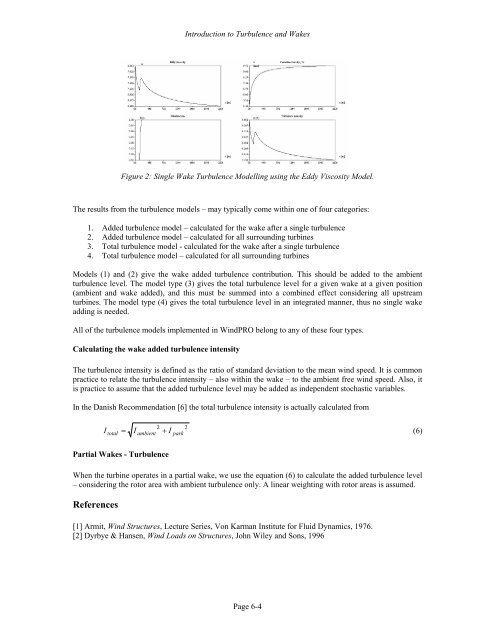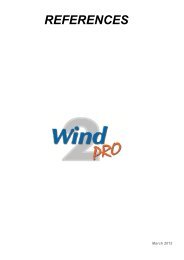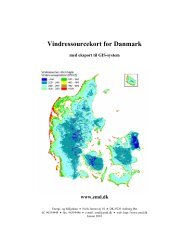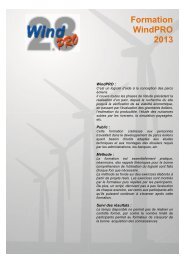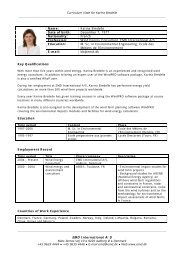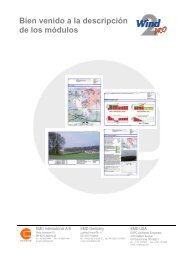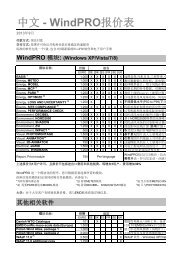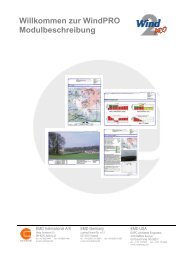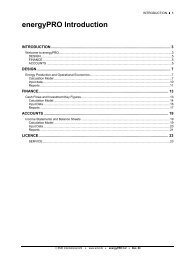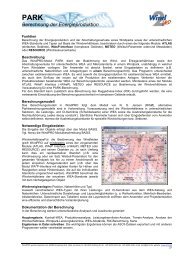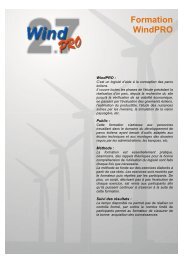WindPRO / PARK - EMD International AS.
WindPRO / PARK - EMD International AS.
WindPRO / PARK - EMD International AS.
Create successful ePaper yourself
Turn your PDF publications into a flip-book with our unique Google optimized e-Paper software.
Introduction to Turbulence and Wakes<br />
Figure 2: Single Wake Turbulence Modelling using the Eddy Viscosity Model.<br />
The results from the turbulence models – may typically come within one of four categories:<br />
1. Added turbulence model – calculated for the wake after a single turbulence<br />
2. Added turbulence model – calculated for all surrounding turbines<br />
3. Total turbulence model - calculated for the wake after a single turbulence<br />
4. Total turbulence model – calculated for all surrounding turbines<br />
Models (1) and (2) give the wake added turbulence contribution. This should be added to the ambient<br />
turbulence level. The model type (3) gives the total turbulence level for a given wake at a given position<br />
(ambient and wake added), and this must be summed into a combined effect considering all upstream<br />
turbines. The model type (4) gives the total turbulence level in an integrated manner, thus no single wake<br />
adding is needed.<br />
All of the turbulence models implemented in <strong>WindPRO</strong> belong to any of these four types.<br />
Calculating the wake added turbulence intensity<br />
The turbulence intensity is defined as the ratio of standard deviation to the mean wind speed. It is common<br />
practice to relate the turbulence intensity – also within the wake – to the ambient free wind speed. Also, it<br />
is practice to assume that the added turbulence level may be added as independent stochastic variables.<br />
In the Danish Recommendation [6] the total turbulence intensity is actually calculated from<br />
total<br />
2<br />
ambient<br />
2<br />
park<br />
I = I + I<br />
(6)<br />
Partial Wakes - Turbulence<br />
When the turbine operates in a partial wake, we use the equation (6) to calculate the added turbulence level<br />
– considering the rotor area with ambient turbulence only. A linear weighting with rotor areas is assumed.<br />
References<br />
[1] Armit, Wind Structures, Lecture Series, Von Karman Institute for Fluid Dynamics, 1976.<br />
[2] Dyrbye & Hansen, Wind Loads on Structures, John Wiley and Sons, 1996<br />
Page 6-4


